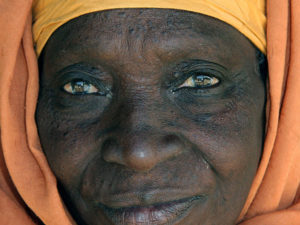RGH Video Blog – The Six Sigma Role of Governments
Hello and welcome to the Global Health Video Class. My name is Dr. Elvira Beracochea and I am the president and CEO of Realizing Global Health. We are a global health consultant company working with governments, NGOs, organizations and individuals (just like you) who are working very hard to improve global health by improving how health systems work. We turn systems that are not working well into self-reliant, sustainable health systems. I am going to talk about how to do that today.
One thing that is very important is to reduce variation and to reduce errors. We always see errors, especially in countries where they do not have systems in place to make sure that they deliver quality healthcare to everyone everywhere every day in a consistent manner. Consistency and reducing variation is the purpose of the system that I have adapted that is called Six Sigma in Global Health.
By adopting Six Sigma, we reduce the number of errors that effect either a patient or the economy of the system. This is due to a waste of resources and a waste of time– because the available resources are not used appropriately. We do that by reducing errors to below Six Sigma. Six Sigma means 3.4 errors per 1 million opportunities. That means health providers may forget to calculate the exact dose of a medicine only 3.4 times per 1 million opportunities. Or, a health provider will forget to write down something or wash his/or her hands—among those errors, some are more serious or impactful to the patient than others. Whether it is a big error or a small error, the important thing is we reduce variation and every patient is treated in the same way, no matter who the provider is or where in which facility they were seen. That is why we need to have standards. Six Sigma allows us to put standards in place to make sure that we deliver quality healthcare.
How does Six Sigma work? It works because of three important principles:
- It is epidemiology-based – which means t is based on the needs of the communities. We have studied the communities and we understand the health and disease patterns. We create systems to deliver healthcare that meet those epidemiological needs.
- It is patient-centered – it is not about providing HIV/AIDS or Malaria prevention, it’s about making sure that we translate those programs into a package of services that meets the needs of that specific patient.
- It is evidence-based – everything we do needs to be based on evidence.
Next time, we will keep talking about Six Sigma and how governments, NGOs, organizations, donors, etc. can adapt these systems to make sure that improve what they do and they really deliver consistent health services to everyone every day. I hope you will join us next time because you will learn more about how to use Six Sigma in your program:
- How you can adapt the policies of your country
- How you can adapt how health facilities work
- How health providers work so that satisfaction with their work increases
- How patient outcomes improve and everybody uses the resources efficiently
So stay tuned and I will see you next time!
Stay in touch with RGH through our weekly email updates, or our weekly video series. Click below to sign up:



